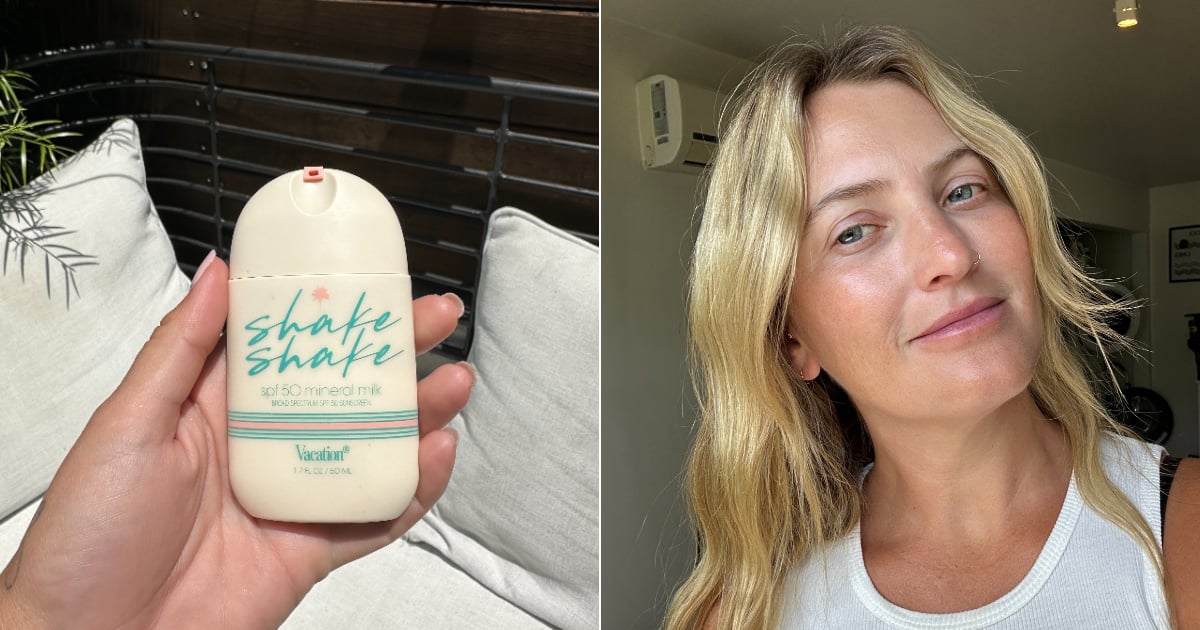To know me is to know that I love the sun, which means that I am somewhat of an expert when it comes to sunscreen. I’ve tested what feels like every formula under the sun and have my clear favorites; however, as I was planning a trip to Hawaii, where there are very strict regulations about what types of SPF can be sold, I had to start testing anew. The ingredients in most chemical and physical sunscreens are a major cause of coral bleaching in Hawaii (and many other ocean ecologies around the world), so you can’t just put any old drugstore SPF on if you’re planning on getting in the water.
This is a complex and nuanced issue, but here’s the quick TL;DR for what can actually be considered “reef-safe” SPF. First, it’s important to note that there are no government regulations for using the word “reef-safe” or “reef-friendly” on packaging, so you’ll need to look at the ingredients to determine if something is actually safe. Many of the sunscreens that call themselves “reef-safe” still contain ingredients that harm coral reefs, like avobenzone, octisalatate, and octocrylene. The only ingredients that are truly reef-safe are zinc oxide and titanium dioxide – and even then, the particle size matters when it comes to marine life. Several studies (published in various journals like the Environmental Science & Technology, Marine Pollution Bulletin, and Drug and Chemical Toxicology) have shown that nano-sized particles of zinc oxide in particular can poison marine life.
The TL;DR: If you’re going to get in the ocean, you need to look for sunscreens that specifically say “non-nano zinc” and list it as the only active ingredient.
The thing is, pretty much all zinc-based SPFs while effective, well, suck – at least when it comes to the formulas. They are known for being pasty, are hard to rub in, and leave a major white cast behind on essentially all skin tones. They are not typically pleasant to wear. The good news is, we live in a time of beauty innovation, and tons of companies have begun releasing improved formulas of non-nano zinc SPFs, especially for the face. One such newcomer is the Vacation Shake Shake SPF 50 ($29), which has quickly gone to the top of my list after testing it for two weeks on the beaches of Hawaii.
Keep reading for my take on this non-nano zinc SPF.
About the Vacation Shake Shake SPF 50
- It is a mineral (aka physical) sunscreen, meaning it protects you from UV rays by forming a protective barrier on the surface of the skin.
- It’s main ingredient is 20.5 percent zinc oxide that is classified as non-nano, making it reef-safe.
- The formula is non comedogenic and safe for acne-prone and sensitive skin.
- Other ingredients include hyaluronic acid, niacinamide, and ceramides to hydrate, plus cucumber, white tea, aloe vera, and vitamin E to help calm and soothe sensitive skin.
What I Like About the Vacation Shake Shake SPF 50
What I like most about Shake Shake is that it actually rubs in without leaving behind an uncomfortable film. Most non-nano zinc SPFs (and most zinc-based SPFs in general) are so incredibly heavy, it feels like you’re leaving a layer of paint sitting on top of your skin. It’s also rare that one of these doesn’t pose the challenge of a disturbingly intense white or gray cast, but that’s not the case with Shake Shake. Not only does it actually sink down on the skin, it doesn’t pill under a light layer of makeup.
I will say that it did tend to leave some little white creases in my undereye wrinkles, but they weren’t super noticeable and were easily rubbed in. Shake Shake definitely leaves a more slick and dewy look than some other mineral sunscreens, but I like that look so it didn’t bother me. I also want to note that it does seem to be water resistant (which is one of the product’s claims) – after swimming in the ocean for around 30 minutes, I didn’t reapply for about another hour when I got out, and didn’t get a burn.
Finally, I just love the packaging. It’s TSA-friendly so I can pack it in my carry on, it has a flip-out spout for easy application and to make sure none of the product goes flying as you’re shaking, and as always, Vacation delivers with the nostalgic vibe.
How to Use the Vacation Shake Shake SPF 50
First off, the product is true to its name – you need to give the bottle a little shake to mix the non-nano zinc formula into a watery-milk texture. After a few shakes, I like to squeeze about a spoonful into my palms (it’s pretty runny, so you likely don’t want to apply it directly to your face) and begin rubbing it across my face, neck, and ears. Now, it’s going to a look shockingly white at first, but trust me, after 30 seconds, it starts to blend down. It feels almost oily at first, but after you rub it in it becomes more smooth and swipes nicely across the face. For me, it takes about 30 to 45 seconds of working it in to get the final texture.
What to Consider Before Trying the Vacation Shake Shake SPF 50
If you’re planning on putting your face in the ocean, a non-nano zinc SPF is a must – but if you’re just hanging out by the pool, it’s not quite as imperative. So I would consider your setting before making your decision. Of the non-nano zinc options out there, I think Shake Shake is the obvious winner, but it is slightly more heavy than most other mineral or chemical sunscreens. If you like the feeling of having an ultra-protective barrier on your skin, this is for you. If you want something a little lighter, this might not be your first choice.
Rating:
Aviel Kanter is the director of branded content for Vox Media and oversees lifestyle content across the portfolio of brands. She manages a team of editors who write articles in the wellness, fitness, beauty, fashion, health, entertaining, pets, and finance categories. She is also a beauty enthusiast and contributes many articles to the POPSUGAR Beauty editorial site.




